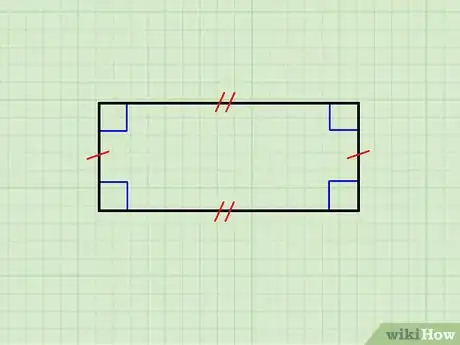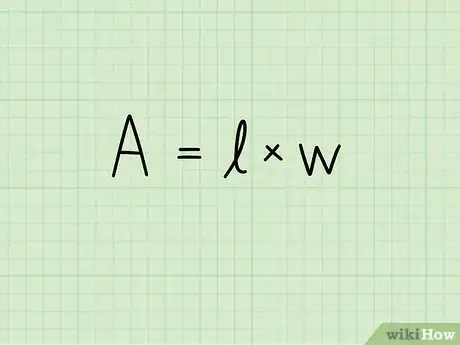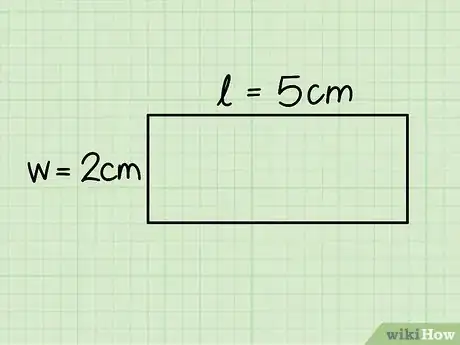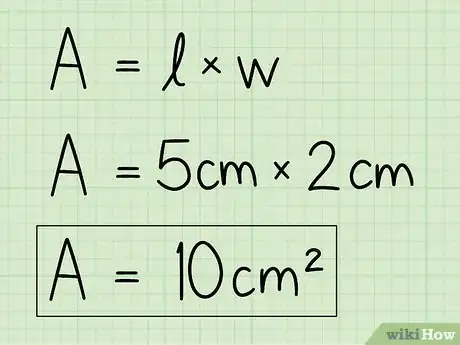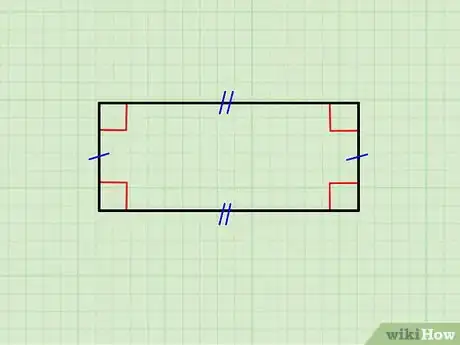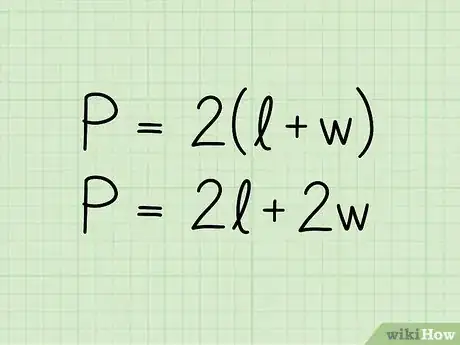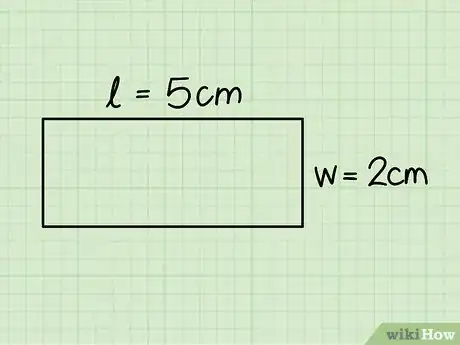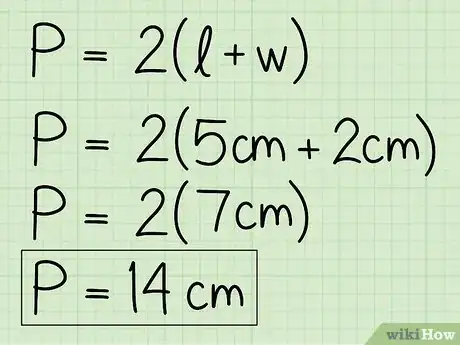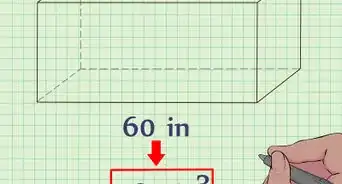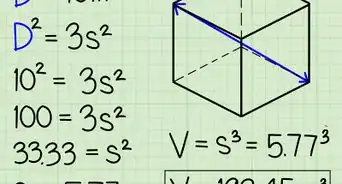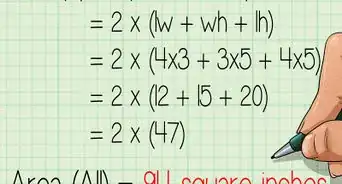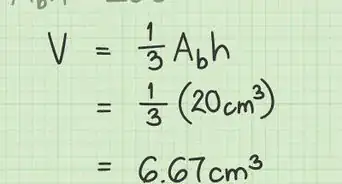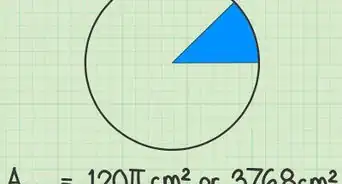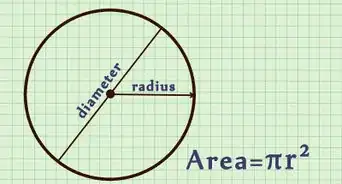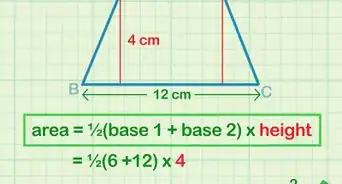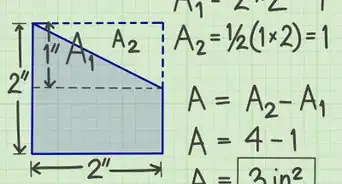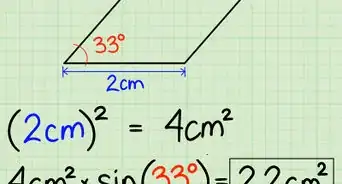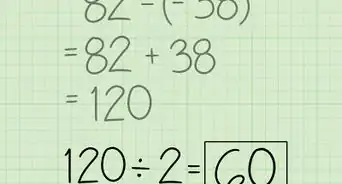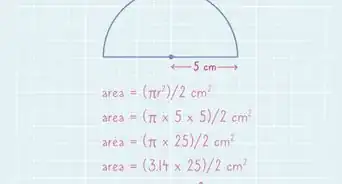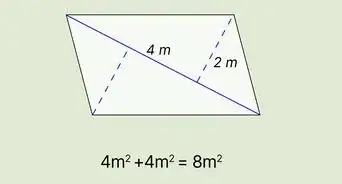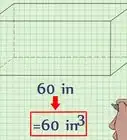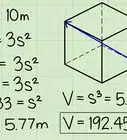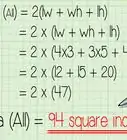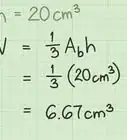This article was co-authored by wikiHow Staff. Our trained team of editors and researchers validate articles for accuracy and comprehensiveness. wikiHow's Content Management Team carefully monitors the work from our editorial staff to ensure that each article is backed by trusted research and meets our high quality standards.
There are 7 references cited in this article, which can be found at the bottom of the page.
This article has been viewed 87,379 times.
Learn more...
A rectangle is a plane, a quadrilateral that has 4 right angles. The sides that are parallel to each other are identical in length.[1] If the rectangle has four equal sides, it is called a square. All squares are rectangles, but not all rectangles are squares. The perimeter of an object is the sum of all the lengths of the sides of that object.[2] The area is the product of the length and the width of the object.[3]
Steps
Finding the Area of a Rectangle
-
1Ensure you are working with a true rectangle. The picture above shows a rectangle where the top and bottom lines are equal in length and the sides are equal in length. The top and bottom are parallel to each other, while the sides are also parallel to each other. In addition, the sides are perpendicular (exactly 90°) to the top and bottom lengths.[4]
- If all four sides of the object are identical, then you have a square. Squares are a type of rectangle.
- If the object you are looking at does not meet these conditions, then it is not a rectangle.
-
2Write down the formula for the area of a rectangle, A = l x w. In the formula for area (A), l is the length and w is the width of the rectangle. The units for area can be any unit for the measure of length squared: feet squared, meters squared, centimeters squared, etc.[5]
- You will see the units written as ft2, m2, cm2, etc.
Advertisement -
3Identify the length and the width of the rectangle. The length of the rectangle is equal to the top or bottom of the rectangle. The width is equal to the side of the rectangle. Using a ruler, measure each side of the rectangle to determine the length and the width.[6]
- In the above example, the length is 5 cm and the width is 2 cm.
-
4Plug in the variables and solve the equation. Using the length and width you just measured, plug them into the formula to solve for the area. Multiply the length times the width to calculate area.[7]
- For example, A = l x w = 5 x 2 = 10 cm2.
Finding the Perimeter of a Rectangle
-
1Ensure you are working with a true rectangle. The picture above shows a rectangle where the top and bottom lines are equal in length and the sides are equal in length. The top and bottom are parallel to each other, while the sides are also parallel to each other. In addition, the sides are perpendicular (exactly 90°) to the top and bottom lengths.[8]
- If all four sides of the object are identical, then you have a square. Squares are a type of rectangle.
- If the object you are looking at does not meet these conditions, then it is not a rectangle.
-
2Write down the formula for the perimeter of a rectangle, P = 2(l + w).[9] In the formula for the perimeter (P) of a rectangle, l is the length and w is the width. You might also see the formula written as P = 2l + 2w. This is the same formula written in a slightly different way.
- The units for perimeter can be any unit for the measure of length: feet, miles, meters, centimeters, etc.
-
3Identify the length and the width of the rectangle. The length of the rectangle is equal to the top or bottom of the rectangle. The width is equal to the side of the rectangle. Using a ruler, measure each side of the rectangle to determine the length and the width.[10]
- In the above example, the length is 5 cm and the width is 2 cm.
-
4Plug in the variables and solve the equation. Using the length and width you just measured, plug them into the formula to solve for the perimeter. There are two ways to solve the equation depending on which formula you have used. For P = 2(l +w) , add the length and the width together and multiply by 2. For P = 2l + 2w, multiply the length by 2 and the width by 2, then add these products together.[11]
- For example, P = 2(l + w) = 2(2 + 5) = 2(7) = 14 cm.
- For example, P = 2l + 2w = (2 x 2) + (2 x 5) = 4 + 10 = 14 cm.
Community Q&A
-
QuestionCan I find the perimeter of a rectangle with an area of 50?
 DonaganTop AnswererNo. Various combinations of length and width could form an area of 50, and therefore the perimeter could be various sizes. For example, if the rectangle measured 5 x 10, the area would be 50, and the perimeter would be 30. If the rectangle measured 2 x 25, the area would be 50, and the perimeter would be 54.
DonaganTop AnswererNo. Various combinations of length and width could form an area of 50, and therefore the perimeter could be various sizes. For example, if the rectangle measured 5 x 10, the area would be 50, and the perimeter would be 30. If the rectangle measured 2 x 25, the area would be 50, and the perimeter would be 54. -
QuestionHow can I make something 9 feet long with an area of 72 feet?
 DanoyachtcaptTop AnswererA rectangle measuring 9 feet by 8 feet would have an area of 72 square feet.
DanoyachtcaptTop AnswererA rectangle measuring 9 feet by 8 feet would have an area of 72 square feet. -
QuestionA boy runs around a rectangular ground. Its length is thrice its breadth. If the boy covers 2 km in 5 rounds, what is the length of the ground?
 DonaganTop AnswererThe length (l) equals three times the width (w), so that l = 3w. The perimeter is twice the length plus twice the width, or 2 l + 2 w, which is 2(3w) + 2 w, so that the perimeter equals 8 w. We're told that five perimeters equals 2 km, so that 5(8w) = 40w = 2 km. That means that w = 1/20 km. That means that l = 3(1/20 km) = 3/20 km.
DonaganTop AnswererThe length (l) equals three times the width (w), so that l = 3w. The perimeter is twice the length plus twice the width, or 2 l + 2 w, which is 2(3w) + 2 w, so that the perimeter equals 8 w. We're told that five perimeters equals 2 km, so that 5(8w) = 40w = 2 km. That means that w = 1/20 km. That means that l = 3(1/20 km) = 3/20 km.
Things You'll Need
- A paper
- A pen or pencil
- A ruler to measure the length
References
- ↑ http://www.mathopenref.com/rectangle.html
- ↑ http://www.mathopenref.com/rectangleperimeter.html
- ↑ http://www.mathopenref.com/rectanglearea.html
- ↑ http://www.mathopenref.com/rectangle.html
- ↑ https://virtualnerd.com/pre-algebra/perimeter-area-volume/perimeter-and-area/area-formulas-examples/rectangle-area-example
- ↑ https://virtualnerd.com/pre-algebra/perimeter-area-volume/perimeter-and-area/area-formulas-examples/rectangle-area-example
- ↑ https://virtualnerd.com/pre-algebra/perimeter-area-volume/perimeter-and-area/area-formulas-examples/rectangle-area-example
- ↑ https://www.omnicalculator.com/math/perimeter-of-rectangle
- ↑ http://www.mathopenref.com/rectangleperimeter.html
